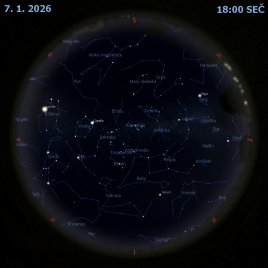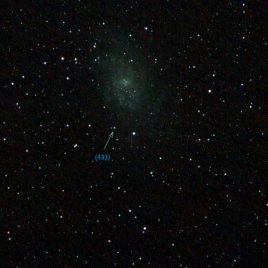Zeta a Rho Ophiuchi v Mléčné dráze

Uznání a copyright: Ireneusz Nowak
Podívejte se na působivě zachycenou, jednu z nejfotogeničtějších oblastí noční oblohy. V levém dolním rohu se šikmo táhne pás naší Galaxie Mléčné dráhy, zatímco vpravo od středu je vidět barevný komplex mraků Rho Ophiuchi a blízko horního okraje je velká červená kruhová mlhovina Zeta Ophiuchi. Obecně platí, že červená barva vyzařuje z mlhovin ve světle excitovaného vodíku, zatímco modrá znamená mezihvězdný prach, který přednostně odráží světlo jasných mladých hvězd. Hustý prach se obvykle jeví tmavě hnědý. Na této noční obloze je mnoho ikonických objektů (dokážete je najít?) včetně jasné hvězdy Antares, kulové hvězdokupy M4 a mlhoviny Modrá koňská hlava. Tento širokoúhlý kompozitní snímek byl pořízen během 17 hodin loni v červnu z Jižní Afriky.
Seznam odkazů v popisu
- AstroBin.com: Ireneusz Nowak (iro): Zeta and Rho Ophiuchi
- NASA: The Milky Way Galaxy
- Wikipedia: Rho_Ophiuchi_cloud_complex
- APOD: 2024-01-04 Zeta Oph: Hvězda na útěku
- Wikipedia: Emission_nebula
- Wikipedia: Hydrogen-alpha
- Wikipedia: Reflection_nebula
- APOD: 2023-01-29 Barnard 68: Temné molekulární mračno
- APOD: 2022-01-17 Temné mlhoviny v Chameleonu
- Redd.it: Foto:Best hide and seek player to ever live:-)
- APOD: 2022-01-26 Hvězdy, prach a plyn u Antaresu
- Wikipedia: Globular_cluster
- APOD: 2024-11-29 Messier 4
- APOD: 2023-09-26 IC 4592: Reflexní mlhovina Modrá koňská hlava
- AstroBin.com: Ireneusz Nowak (iro): Zeta and Rho Ophiuchi
- Wikipedia: South_Africa
NASA Official: Phillip Newman Specific rights apply. NASA Web Privacy Policy and Important Notices
A service of: ASD at NASA / GSFC & Michigan Tech. U.
Odkaz na originální APOD


